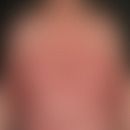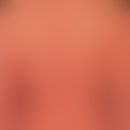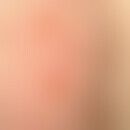Synonym(s)
HistoryThis section has been translated automatically.
DefinitionThis section has been translated automatically.
Rare, relatively mild keratinization disorder belonging to the congenital epidermolytic ichthyoses with blistering and hyperkeratosis in the absence of erythroderma. Ichthyosis bullosa is considered a special form of epidermolytic ichthyosis (older name: Erythrodermia congenitalis ichthyosiformis bullosa), with the peculiarity of the absence of erythroderma. Remark: Superficial epidermolytic ichthyosis is often referred to as"epidermolytic epidermal nevus" in the literature (Mohamad J et al. 2021)! This designation is misleading and should be avoided!
You might also be interested in
EtiopathogenesisThis section has been translated automatically.
Autosomal dominant mutations of the keratin genes 2A and 2E (KRT2A; KRT2E; gene locus: 12q11-q13) with consecutive disruption of the keratins 2A and 2E are proven.
ClinicThis section has been translated automatically.
HistologyThis section has been translated automatically.
TherapyThis section has been translated automatically.
External therapyThis section has been translated automatically.
Internal therapyThis section has been translated automatically.
Remember! Higher dosages may lead to increased blistering.
Note(s)This section has been translated automatically.
It is likely that superficial epidermolytic ichthyosis and epidermolytic ichthyosis are different phenotypes or severities of the same genotype (OMIM113800).
LiteratureThis section has been translated automatically.
- Basarab T (1999) Ichthyosis bullosa of Siemens: report of a family with evidence of a keratin 2e mutation, and a review of the literature. Br J Dermatol 140: 689-695
- Moraru R et al (1999) Ichthyosis bullosa of Siemens resulting from a novel missense mutation near the helix termination motif of the keratin 2e gene. Clin Exp Dermatol 24: 412-415.
- Mohamad J et al (2021) Epidermolytic epidermal nevus caused by a somatic mutation in KRT2. Pediatr Dermatol 38:538-540.
- Siemens HW (2000) Fiction and truth about ichthyosis bullosa, with comments on the systematics of epidermolyses. Arch Derm Syph 175: 590-608.
- Smith F (2003) The molecular genetics of keratin disorders. Am J Clin Dermatol 4: 347-364.
- Steijlen PM et al (1991) Ichthyosis bullosa of Siemens responds well to low-dosage oral retinoids. Br J Dermatol 125: 469-471
- Whittock NV et al (2001) New mutations in keratin 1 that cause bullous congenital ichthyosiform erythroderma and keratin 2e that cause ichthyosis bullosa of Siemens. Br J Dermatol 145: 330-335
Incoming links (7)
Anular epidermolytic ichthyosis; Comedonal Epidermolytic Nevus; Epidermolytic ichthyosis; Keratin; KRT10 Gene; KRT2 Gene; Siemens, hermann werner;Outgoing links (10)
Acitretin; Bubble; Epidermolytic ichthyosis; Erythrodermia; Hyperkeratosis; Ichthyosis (overview); Ichthyosis vulgaris; Lactic acid; Retinoids; Urea (overview);Disclaimer
Please ask your physician for a reliable diagnosis. This website is only meant as a reference.




